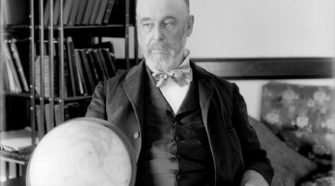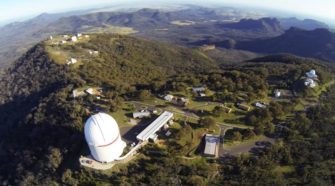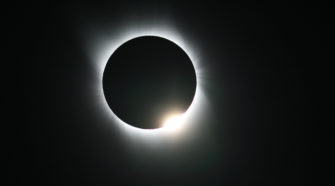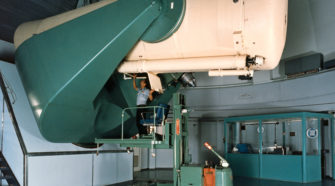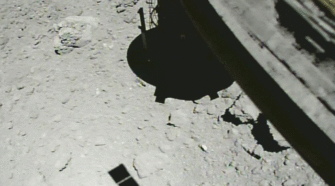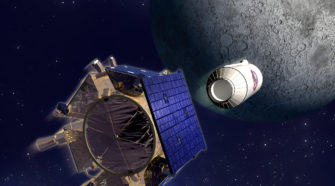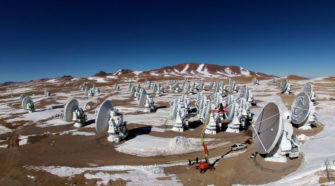History
This Week in History: August 9-15
AUGUST 9, 1996: The NEAT program based in Hawaii discovers an apparent asteroid, designated 1996 PW, that is found to be traveling in a near-parabolic comet-like orbit with an approximate orbital period of 5600 years. 1996 PW was the first known long-period “Damocloid,” and these objects are discussed in a future “Special Topics” presentation. AUGUST …
This Week in History: August 2-8
AUGUST 3, 1963: U.S. Government sensors detect an airburst explosion near the Prince Edward Islands off the southern coast of South Africa. At first it was thought that this was caused by a clandestine nuclear device tested by that nation, but later study revealed that it was caused by an incoming small stony asteroid. Airburst …
This Week in History: July 26-August 1
JULY 28, 2014: The Pan-STARRS program in Hawaii discovers the centaur designated as 2014 OG392; it has an orbital period of 42.8 years and will pass perihelion in November 2021 at a heliocentric distance of 10.0 AU. An observational analysis published earlier this year indicates sustained cometary activity, however, this report was published too late …
This Week in History: July 19-25
JULY 19, 2009: An unknown object, most likely an asteroid a few hundred meters across, impacts Jupiter, leaving a black “scar” in Jupiter’s atmosphere that persists for the next one to two weeks; the “scar” was first noticed by amateur astronomer Anthony Wesley in New South Wales. The “scar” was reminiscent of those produced by …
This Week in History: July 12-18
JULY 12, 2001: American astronomer Gary Melnick and his colleagues publish their discovery of water vapor around the old, evolved star CW Leonis, suggesting the presence of exocomets around that star. The subject of exocomets, including the importance of this discovery, is discussed in a previous “Special Topics” presentation. JULY 12, 2126: Comet 109P/Swift-Tuttle, the …
This Week in History: July 5-11
JULY 5, 1687: British physicist Isaac Newton publishes his Philosophiae Naturalis Principia Mathematica (Mathematical Principles of Natural Philosophy), usually known as the Principia, wherein he lays out what is now known as his Law of Universal Gravitation. Part of Newton’s work in the Principia was based upon his calculations of the Great Comet of 1680 …
This Week in History: June 28-July 4
JUNE 28, 1911: A meteorite falls to the ground near the village of El Nakhla El Bahariya, Egypt. The Nakhla meteorite was one of the first-known meteorites determined to have come from Mars. A fragment of the Nakhla meteorite supposedly struck and killed a dog, although there has been no independent confirmation of this. “Martian …
This Week in History: June 21-27
JUNE 22, 1978: U.S. Naval Observatory astronomer James Christy discovers Charon, Pluto’s first-known moon. Charon, the discovery of which would be confirmed with a series of transit and occultation events between it and Pluto that began in 1995, provided a major step in our understanding of Pluto’s size and physical nature. Pluto, its system of …
This Week in History: June 14-20
JUNE 14, 1770: The renowned French comet hunter Charles Messier discovers a moderately bright comet in Sagittarius. 2½ weeks later this comet passed just 0.015 AU from Earth, the closest confirmed cometary approach to Earth in history. The comet, named after Swedish mathematician Anders Lexell, who computed its orbit, was later perturbed into a much …
This Week in History: June 7-13
JUNE 7, 2013: A team led by Dutch astronomer Nienke van der Marel announces their discovery of a planet-forming – and comet-forming – disk of material surrounding the young star Oph-IRS 48 in the constellation Ophiuchus, using data obtained with the Atacama Large Millimeter/submillimeter Array (ALMA) telescope in Chile. An ALMA image of this disk …

